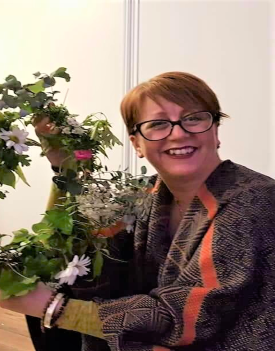The Practice of Pranayama in the Modern World by Claire Hall
As a Yoga teacher who has been taught and teaches the traditional Hatha practice of Yoga, pranayama is a fundamental part of this practice. As more and more classes offer a more contemporary form of yoga, which may or may not include a pranayama practice, my thoughts led me to ponder as to whether this practice of pranayama is still relevant today?
Pranayama is one of Patanjali’s eight limbs of Yoga, ‘prana’ translates to breath, respiration, life, vitality or strength. ‘Ayama’ translates to stretch, expansion, regulation or control. They originate from The Hatha Yoga Pradipika one of the ancient yogic texts. The traditional pranayama practices focus on altering the breath length, retention of the breath (kumbhaka), using sound or directing the flow of breath in different ways through the nostrils. B.K.S Iyengar states that ‘the purpose of pranayama is to make the respiratory system function at it’s best. This automatically improves the circulatory system, without which the processes of digestion and elimination would suffer.’* It would seem that as a physical practice pranayama has its place. We are living in an age where respiratory diseases are on the increase. I have spoken to yoga practitioners including my own students who have said that the practice of pranayama has helped them either manage or recover from Covid quicker. Some have even said that without the practice they think they would have been far worse then they were. The practice increases lung capacity as we tend to breath only into a small fraction of our lungs, pranayama encourages their full use, we breathe ‘better’ utilising the full breathing system, removing stagnant air and therefore cleansing the whole system. In a world of pollution, it would seem beneficial to ‘cleanse’ the lungs in this way.
Pranayama is a stage on the journey to meditation. Slowing and focusing on the breath requires concentration (dharana) and the discussion of the benefits for the mind are not for today but another discussion at a later date but of course in a time where our mental health is suffering this is an important part of the practice.
So, will I continue to teach pranayama in my classes and of course the answer is absolutely yes! The ancient Yogi’s knew it’s benefits and I feel those benefits are even more prevalent today, maybe more so than they were then.
Claire is a British Wheel of Yoga trained teacher and West Yorkshire Representative for the BWY.
If you are interested in learning more about pranayama, Claire teaches at OM on a Wednesday evening 6pm-7:30pm and 7:45pm -9:15pm.
Contact: 07722241676 or yeadonyoga@gmail.com
*P21, Iyengar, BKS, Light on Pranayama, 2013, Harper Collins, London

